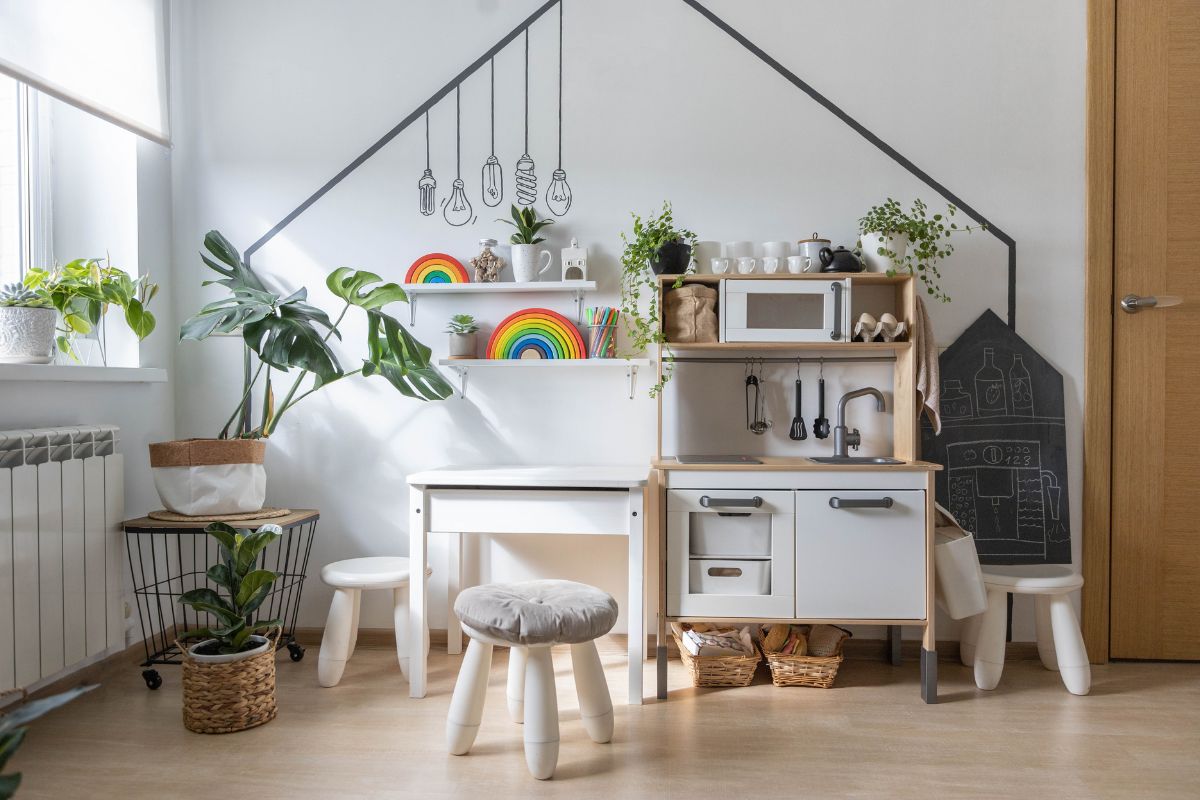Creating a Montessori-inspired learning environment goes beyond arranging furniture or adding educational toys. It is about crafting a space that encourages independence, fosters curiosity, and supports a child’s natural desire to learn. By integrating elements that reflect Montessori principles, educators and parents can design a setting that nurtures growth, creativity, and self-discipline.
What Makes a Montessori-Inspired Learning Space Different?
A Montessori learning space is designed to be calm, organized, and inviting. The layout and materials should be carefully selected to encourage exploration and hands-on learning. Unlike traditional classrooms, these spaces prioritize freedom of movement, self-directed activities, and a connection to the natural world.
Montessori classrooms or home learning environments often feature child-sized furniture, accessible shelves with engaging materials, and designated areas for different activities. The goal is to allow children to take charge of their own learning by choosing their work and engaging in tasks that match their developmental needs.
Key Features of a Montessori-Inspired Space
A well-designed Montessori space includes several important elements that set it apart from conventional learning settings.
Order and Organization
Every material has its place. Keeping the space uncluttered helps children develop a sense of order and responsibility. Organized environments also promote focus and allow children to move seamlessly from one activity to another without distractions.
Natural Materials
Wooden furniture, cotton fabrics, and baskets instead of plastic bins contribute to a warm, inviting atmosphere. Natural materials also provide sensory benefits and connect children to the environment in a meaningful way.
Child-Sized Elements
From tables and chairs to sinks and shelves, everything should be within the child’s reach. When children can access materials without assistance, they develop independence and confidence in their abilities.
Soft, Neutral Colors
Bright primary colors are often replaced with soft, natural tones that create a peaceful atmosphere. The intention is to make the learning environment feel more like a home than a traditional classroom.
Practical Life Areas
A Montessori space includes areas where children can engage in everyday activities such as cooking, cleaning, or taking care of plants. These activities not only build independence but also strengthen motor skills and concentration.
Creating a Home Montessori Learning Environment
Parents who want to bring Montessori principles into their homes can start small and gradually adjust their spaces to meet their child’s needs.
Start with One Room
Designating a specific area for learning helps children associate that space with focus and discovery. A reading nook with a small shelf, a simple work table, or a low-hanging coat rack for easy access are great places to start.
Rotate Materials
Rather than overwhelming children with too many choices, a Montessori home setup features a limited number of activities that are rotated periodically. This keeps the learning space fresh and engaging while maintaining a sense of order.
Encourage Independence
Simple adjustments, such as placing snacks in a child-accessible area or using step stools to reach sinks, encourage self-sufficiency. When children can complete everyday tasks on their own, they develop confidence and practical skills.
Limit Plastic and Battery-Operated Toys
Montessori-inspired play areas emphasize open-ended materials like wooden blocks, real-life tools, and natural elements such as stones or leaves. These items allow for imaginative play while also refining sensory and motor skills.
The Role of Nature in Montessori Spaces
A connection to nature is fundamental in Montessori learning. Outdoor environments offer endless opportunities for exploration and discovery. Whether it’s tending to a garden, collecting leaves, or observing insects, nature provides real-world experiences that enhance learning.
Bring Nature Indoors
Incorporating plants, natural light, and fresh air into indoor spaces fosters a sense of tranquility. Small indoor gardens, nature-themed artwork, or wooden furniture can help maintain a connection to the outside world.
Outdoor Learning Areas
A simple backyard or patio can become an extension of the learning environment. Sand and water tables, garden beds, and spaces for movement activities encourage outdoor learning and physical development.
Designing Spaces for Different Age Groups
Montessori environments are tailored to meet the developmental needs of different age groups.
Infants and Toddlers
A prepared environment for the youngest learners focuses on safety, simplicity, and sensory experiences. Floor beds, low mirrors, and soft rugs allow infants to move freely. Simple toys that promote grasping and exploration help develop fine motor skills.
Preschool and Early Childhood
Children in this stage benefit from accessible shelves with hands-on learning materials. A mix of fine motor activities, language development tools, and practical life exercises should be included. Small tables and chairs encourage independent work.
Elementary Age
Older children require designated areas for reading, writing, and problem-solving. Montessori-inspired spaces for this age group can include research materials, maps, and project-based learning stations. Providing a quiet space for reflection or independent study is also beneficial.
Creating an Atmosphere of Respect and Learning
A Montessori learning space is not just about the physical setup; it’s also about fostering a respectful and peaceful atmosphere.
Encouraging Responsibility
Children should be involved in maintaining their environment. Simple responsibilities such as tidying up, watering plants, or setting the table teach them the value of caring for their surroundings.
Respecting Individual Learning Styles
Every child learns differently. A well-designed space accommodates a variety of learning styles by offering a mix of quiet areas, group workspaces, and movement-friendly zones.
Providing Freedom Within Limits
While Montessori environments encourage independence, they also provide structure. Ground rules help children understand boundaries while still allowing them to make choices about their learning.
The Lasting Impact of a Thoughtfully Designed Montessori Space
A carefully planned learning environment influences how children engage with the world. By creating a space that fosters independence, creativity, and a love for learning, parents and educators lay the foundation for lifelong curiosity and problem-solving skills.
Montessori-inspired spaces are more than just aesthetically pleasing; they shape a child’s development by supporting their natural desire to learn. Whether in a classroom or at home, these environments provide children with the tools to grow, explore, and reach their full potential.
